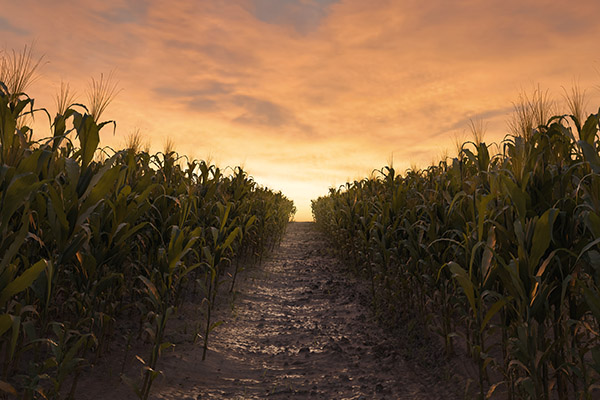As record-high inflation rates put pressure on Americans’ wallets, growers are particularly feeling the squeeze. Inputs such as fertilizer and herbicides – already a large operational expense – have spiked in cost an upward of 300% from a year ago.
“A lot of producers locked in fertilizer prices last fall, hoping input suppliers will be able to honor those agreements,” says William Currie, Conterra Ag Capital vice president relationship manager for the U.S. Delta region. “When fertilizer costs have tripled in the last year and a half, we have to think about ways to navigate those prices.”
Currie says Delta-region farmers are noticing the price crunch, particularly as interest rates rise to offset some inflation. For more-seasoned farmers, rising interest rates can bring back memories of the 1980s farm crisis. But Currie says he’s pleasantly surprised interest rates haven’t risen more – though they could continue to climb later in 2022.
However, optimism lies in the current commodity prices, despite volatility from the ongoing Russian invasion of Ukraine. But are prices high enough to offset climbing interest rates and record inflation? Currie says yes, at least for the short term.
“If prices right now were what they were two years ago, there’s no way anybody could make a profit from farming” says Currie. “It’s not ideal, as inflation and interest will be eating into profit margins this year, but we’re still at a cash-flow situation for most growers.”
According to the Arkansas native, all indications point toward a rising interest rate environment for much of 2022. Combined with inflation, overall net income is projected to fall noticeably shorter than last year, though government payments ultimately boosted farm profitability in 2021. Some studies have pointed to a net farm income decline as high as 65% for row-crop farmers in 2022. Inflation will also have livestock producers feeling the strain on feed costs.
What can growers do to better weather the storms of rising interest rates and supply costs?
Currie says growers should consider these three strategic moves:
- When watching commodity markets, don’t feel obligated to lock in the highest price. “It can be more advantageous to lock in a price you can break even on half of your crop,” says Currie. “Then, play the markets with a smaller percentage of your crop as to not get caught up in price watching.”
- On the balance sheet side, locking in long term, low-interest loans could be a way to mitigate high-interest risk. “It’s possible to use that money to pay off any high-interest or intermediate term debt, lowering overall risk,” he adds.
- An additional way to get out of potentially high-interest debt is to leverage assets. “You could consider taking your strongest asset and paying off those high-interest debts that could bloom or have a variable rate attached to them,” offers Currie. “Try to put yourself in a position to move forward without having to worry about balance-sheet-breaking interest rates.”
Variable rate interests are common on production lines of credit and can be an unnecessary added risk. For equipment debt, even a loan that doesn’t change interest rates until two, three or four years in could shock a balance sheet if it does suddenly adjust to a much-higher rate. Currie says to be cognizant of those credit lines, as they can make a grower susceptible to the current interest-rate environment.
At the end of the day, a lender with flexibility is the best tool a grower can have as market dynamics change this year. Whether its record-high fertilizer costs, interest rate volatility or otherwise, lenders like Currie and others at Conterra can provide commitment, expertise and flexibility to work alongside growers battling economic uncertainty.
Disclaimer: Please note that the information provided in this article is for educational and informational purposes only, and should not be construed as financial or investment advice. While we have made every effort to ensure the accuracy and reliability of the information presented, Conterra Ag Capital and its affiliates make no representation or warranty as to the completeness, correctness, timeliness, suitability, or validity of any information contained in this article. You should always consult a qualified financial advisor, tax professional, or other qualified professional for advice on your specific financial situation.





